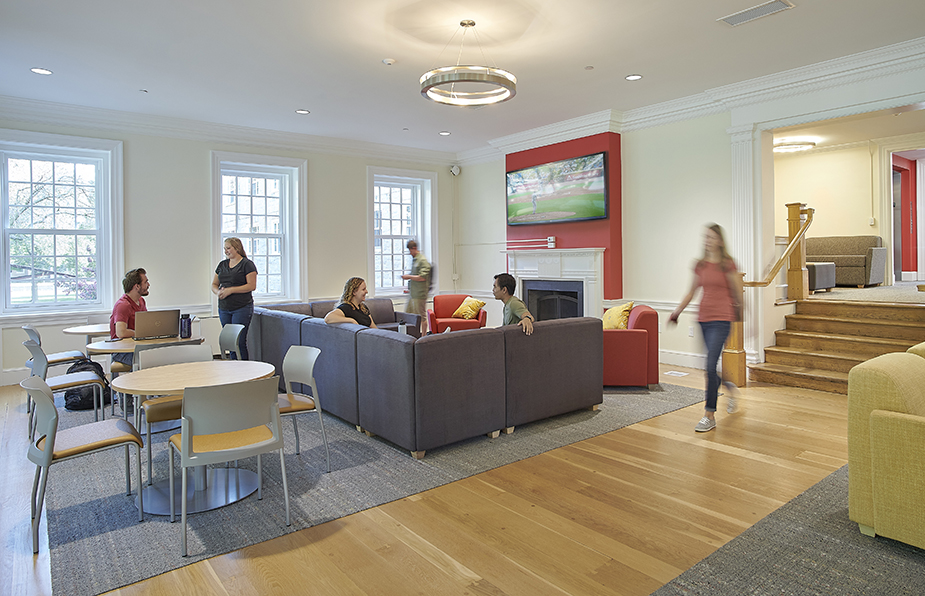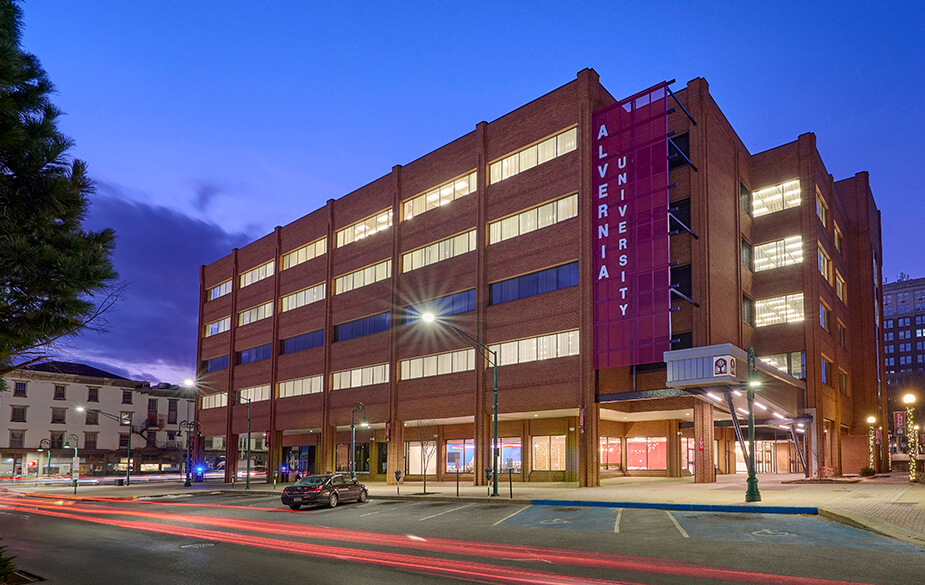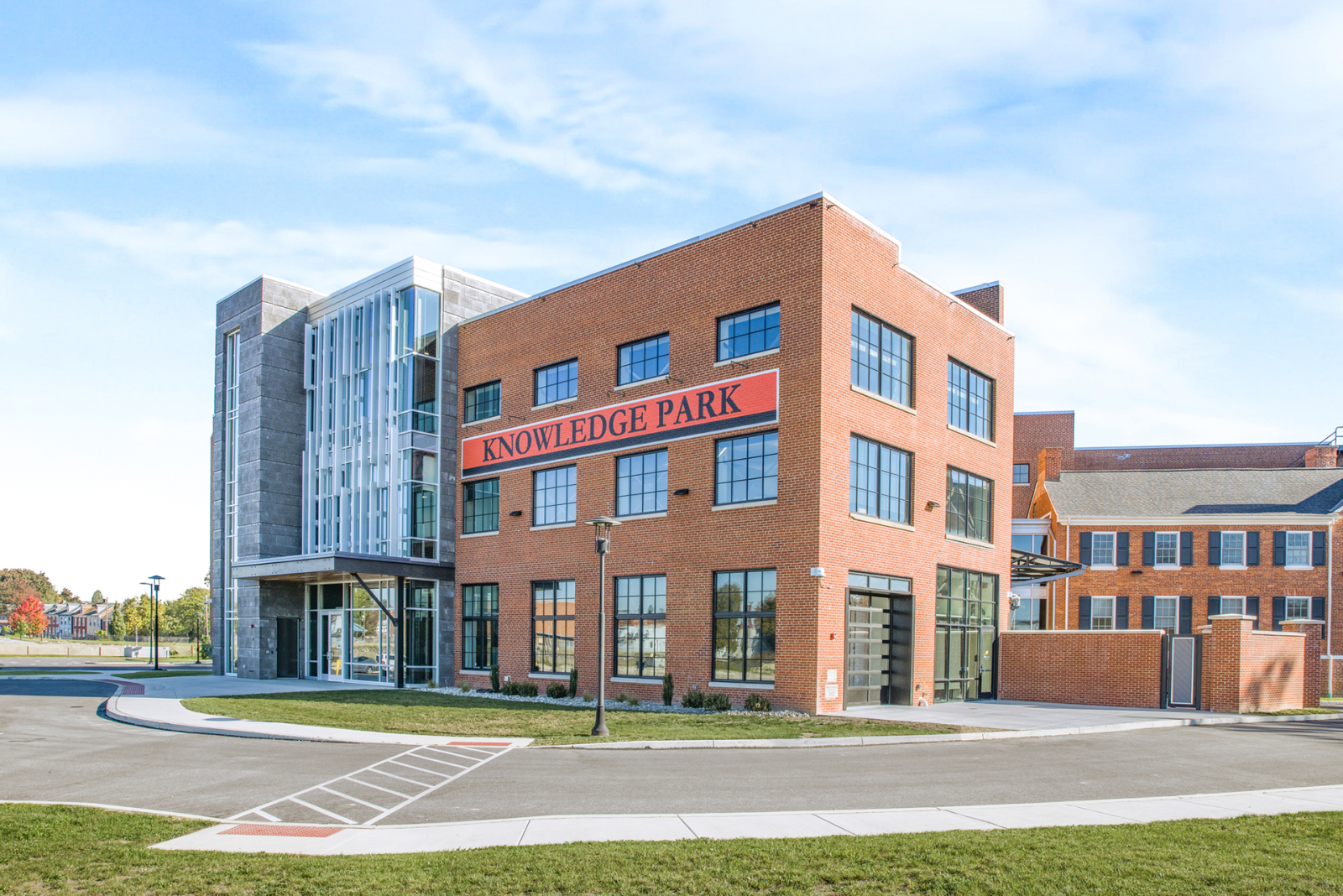Economic Advantages of Adaptive Reuse
Adaptive reuse in architecture—the practice of using an existing building for another purpose—is gaining momentum across the country. The practice is occurring across all sectors, including higher education campuses. By reusing buildings on their campuses or re-purposing a building in their local community, educational institutions can reap economic, environmental and social benefits.
A similar trend is happening in cities and towns of all sizes. With more companies adopting a work-from-home model, businesses often downsize office space or leave their building entirely. Worklife.news reported at the end of 2023 that about 75% of businesses plan to reduce office square footage in 2024.
Many higher education institutions are currently feeling the sting of declining enrollment. In response, several have decided to reduce program offerings or reorganize space on campus to create more efficiencies in real estate. These and other factors often result in either partial or completely empty buildings on campus. If educational institutions can find another use for these buildings, both the institution and the community can realize the following benefits:
- Cost savings. Renovating an existing building generally costs less than new builds. Money saved can be used to fund programs or scholarships, add staff, or incorporate amenities in building upgrades.
- Time savings. Renovation projects have the potential to take less time to complete than new construction since they don’t require a land development submission.
- Maintains Tenantship: Buildings that are fully occupied provide a more vibrant campus and community experience, making tenantship overall more desirable.
Environmental Benefits of Adaptive Reuse
The Princeton Review has reported that 59% of students surveyed indicated that having information about an institution’s commitment to the environment would contribute to their decision to apply to or attend an institution. Adaptive reuse projects provide many opportunities for higher education institutions to act as responsible stewards of their resources, showing their commitment to sustainable building practices in the following ways:
- Reduces waste. When an existing building is reused rather than razed, less waste is sent to landfills.
- Overall reduction of resources being used. Less new materials are used when a building is being reused instead of being built from ground up.
- Reduces the carbon footprint. Greenhouse gases and carbon emissions are greatly reduced during adaptive reuse projects in part due to reduced construction time. Various adaptive reuse projects globally have seen carbon emissions savings of between 40-70% when compared to new builds.
Social Benefits of Adaptive Reuse

Dickinson College consciously elected to renovate a historic 1950s residence hall on campus. Campus architecture remained unchanged and less material was sent to the landfill through this sustainable practice.
Maintaining or consistently improving town-gown relations is important to many higher education institutions. Reusing un-used or under-used spaces on campus or in the community provides benefits to both the institution, its students and the community as a whole. Some of the advantages of adaptive reuse are:
- Preserves the campus and/or community. Often, the buildings that have been left empty are historic structures on campus or are well-known in the community. The adaptive reuse of these buildings instead of demolition not only preserves the architecture of the area but also provides a link to the past.
- Creates flexible, multi-use spaces. Creating flexible education spaces that can function as spaces to hold community meetings or events provides an opportunity to connect with and host community organizations.
- Fewer disruptions. Inside-the-box renovations generally prove to be less disruptive to a campus and the neighboring community than a large-scale construction project.
Adaptive reuse on campus breathes new life into existing structures and can create a more dynamic environment. This approach benefits the environment by reducing waste and strengthens the institution’s connection to the community by retaining landmark buildings. Adaptive reuse allows higher education institutions to invest in their future while honoring the past and creating a learning environment that can attract and retain students.


About the Author
Carson has responsibility for coordinating multi-disciplinary teams and guiding projects through the planning and design phases into construction and occupancy. He works closely with clients to translate design objectives into innovative solutions within the constraints of budgets, schedules and accessibility guidelines. Carson is an NCARB Registered Architect, a LEED Accredited Professional and a WELL Accredited Professional. He is a member of the American Institute of Architects and past president of the AIA Central PA Chapter. Carson also participates in the Penn State University architectural student mentoring program. In 2021 he was a recipient of the Penn State Alumni Association’s Alumni...
Learn More About Carson
